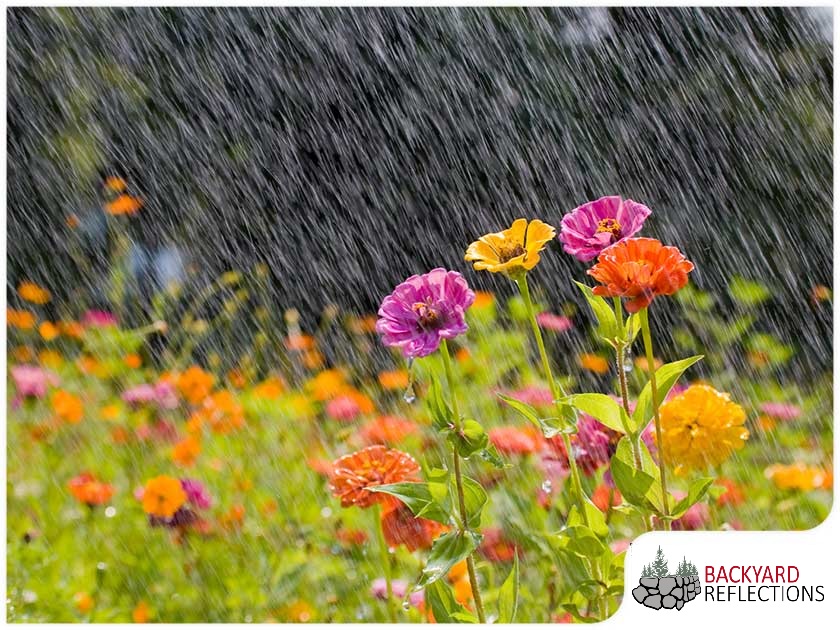A rain garden is a bowl-shaped area that gathers water runoff from downspouts, sump pumps, roofs, driveways, walkways, and lawns. It is an efficient and sustainable way to collect rainwater for your plants. With a rain garden, you’ll not only save on utility bills but also help the environment.

Discover more of its benefits from a trusted landscape design company.
Rain Gardens
During heavy rain, most of the water usually comes down so fast that it runs off instead of soaking into the ground. It means that your plants can’t benefit from it. In a rain garden, heavy water is used to recharge the aquifer, sustain wildlife habitat, and filter out harmful materials before they reach streams.
It is one of the best ways to utilize rainwater and you can water your plants at no cost. Building a rain garden in your landscape can reduce the likelihood of basement flooding, lower water bills, and lead to a cleaner environment.
Planning a Rain Garden
You can create a rain garden by directing the water flow from your roof to the where your water-loving plants are located. With the help of an expert, you can build one from scratch. Ideally, your garden should be between 20 to 30 percent the size of your roof or driveway. For instance, if you have a 1000 sq. ft. roof, your rain garden should be 200 to 300 sq. ft. in size.
Different types of plants can be used for your rain garden. Trees and large shrubs help slow down rainwater before it reaches the ground. They also let the water soak into the ground instead of running off right away. Perennials such as tall grasses filter out and trap pollutants and prevent silt from going into other bodies of water. Then there are also deeply rooted plants that hold soil and bring water into the subsoil.
At Backyard Reflections, we’re here to help with your outdoor living needs. We specialize in design-build construction, maintenance, and enhancements. Call us at (320) 274-6336 or fill out our contact form to request a consultation.


